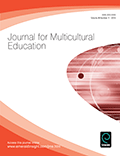This paper examines the experiences and outcomes of male teacher candidates in the College of Education at a large university in California.
Design/methodology/approach
This mixed methods study highlights findings from the preliminary analysis of student records as well as qualitative observation notes from their university supervisors and master teachers during their student teaching placements. Comments from student teaching assistance plans and remediation tools from the College of Education, Field Placement Office were also used. It also included the quantitative analysis of enrollment data as well as mid- and final student teaching evaluations for one semester. This multiple data triangulation process was used to illuminate the unique challenges and successes of male teacher candidates and the variables that influence their outcomes.
Findings
There were significant statistical differences (p < 0.05) between the male and female teacher candidates across each key measure used. Male teacher candidates scored lower in the areas of mathematics, assessment, planning and student engagement during instruction.
Practical implications
This study offers strategies that teachers’ trainers may use to recruit, retain and more effectively support the needs of their male elementary teacher candidates.
Originality/value
Few studies have examined both qualitative and quantitative data to determine pedagogical factors that impact male teacher candidates’ challenges and/or successes during their student teaching experiences. Moreover, few studies have explored how teacher training programs can more effectively support the needs of this population. This study is designed to fill that void.

